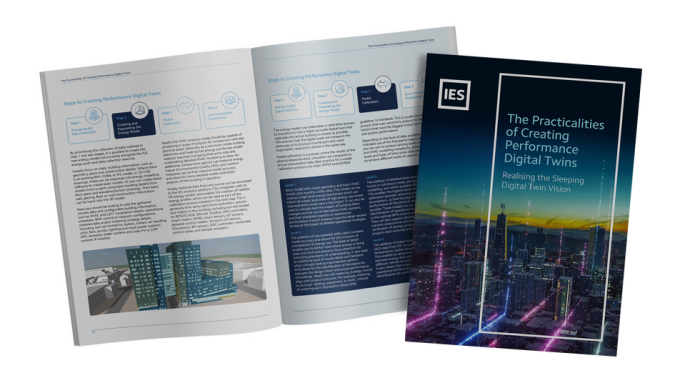Contributors – Leigh Taylor, Garie Warne
The digital twin landscape has been revolutionized by the integration of control and automation technologies. These technologies play a crucial role in optimizing operations and maintenance for various industrial and infrastructure systems. The integration of these technologies into the digital twin landscape has enabled organizations to make informed decisions and improve the overall performance of their systems. In this article, we will discuss the Anglian Water OT (Operational Technology) strategy, how critical this is to a successful digital transformation and how it fits into the enterprise picture. Additionally, we will also discuss how a NRTM (Near Real Time Model) solution is being used within the delivery of Anglian Water’s Strategic Pipeline as a “”system of systems”” to aid operations and maintenance.
AW OT Strategy
The Anglian Water OT strategy is a highly important aspect of the digital twin landscape as it helps describe how these control systems should be implemented and used. It focuses on the use of control and automation technologies to optimize the performance of operational systems. The OT strategy is implemented by using various control and automation technologies, such as Industrial Internet of Things (IIoT) enabled SCADA systems linking into an Industry 4.0 approach with a central data core. This approach takes the principles of Edge Driven (to ensure that the most up to date information can be used), Report by Exception (to minimise data transfer) and Open Architecture (to avoid vendor lock in). A further principle of Connect, Collect and Store, means that all data is enabled within a connection (to enable ease of future enhancements), what is needed to be looked at is physically collected and looked at, and only what is needed from a latest data update, trend analysis, or historical perspective is stored on a long-term basis.
Industry 4.0
The Industry 4.0 approach taken by Anglin Water’s Strategic Pipeline Alliance (SPA) differs from previous approaches in that data is placed at the core of the operations and silos, and point-to-point integration are removed. This allows data to be captured at the site (or edge) level and seamlessly be used throughout the enterprise.
SCADA systems are used to remotely monitor and control various aspects of industrial and infrastructure systems, such as pipelines, and water treatment facilities. In the digital twin landscape, SCADA systems are used to monitor the performance of infrastructure systems and make adjustments as needed to optimize their performance. For example, Anglian Water is using SCADA systems to monitor the flow of water through the Strategic Pipeline, as well as the functioning of pumps, valves, and other critical components. The SCADA and related control system is made up of several different components, including sensors and actuators that are placed along the pipeline to collect data, and a central control system that processes and displays this data in real-time, all of which must be fully compliant with National Infrastructure Standards (NIS) which governs infrastructure-based systems which are deemed to be critical national infrastructure.
SPA recognised that a key component in managing large infrastructure systems is the use of a “”data core””. A data core is a centralized repository for storing, processing, and analysing data from the pipeline and other systems. This data can include things like sensor data, control system data, and other operational data, as well as more IT centric data such as asset information, location data, hydraulic models, and BIM (Buildings Information Management) data.
By storing this data in a centralized location, Anglian Water can easily access and analyse it to identify any issues that need to be addressed. Our Data Core solution involves the use of a centralized data storage and processing system, which is integrated with the SCADA system and other technology systems to provide a holistic view of the pipeline and its surrounding infrastructure. This is a key difference between our approach and many other Proof of Concept activities within the market, as it is inherently scalable and able to more easily be productionised.
The implementation of the data core solution also provides opportunities for the development of a “”Near Real Time Model”” (NRTM) solution for SPA. An NRTM solution will allow Anglian Water to see how the pipeline is behaving in real-time and adjust as needed. By having this level of control, Anglian Water can ensure that the pipeline is operating at peak efficiency and minimize the risk of downtime or other issues.
SCADA Control
Control and automation technologies will be used within SPA to remotely monitor and control various aspects of industrial and infrastructure systems. From a control perspective to ensure the operation of what is a critical asset for supplying water to hundreds of thousands of customers, SPA has a three-layer approach to control, as seen in this diagram. The core layer (Pipeline and Sites) is based upon autonomous control of each individual site, with a further “last line of defence” of manual site-based control. These are fully isolated from the outside world; however, as the SPA pipeline is highly complex, neither of these is a sustainable position to be in for long.
To automate and ensure that all of the 70+ sites that are linked to the SPA pipeline can operate effectively as a single system a SCADA (Supervisory Control and Data Acquisition) system acts as a Regional Control system over all the sites, ensuring that the right amount of wholesome water is received by the right customers at the right time primarily using a mass balance approach to ensuring that water is moved in a way that maximises supply against an agreed prioritisation.
Whilst this control system can ensure that the right amount of water is moved, it cannot optimise for cost, impacts related to the use of sustainable energy or other factors such as ensuring we optimise the amount of water we abstract, out of the ground over a yearly period. This is the job of a Near Real Time Model, which will try an optimise as much as possible these factors, making the SPA pipeline as efficient as possible.
NRTM Control
The NRTM solution is a “”system of systems””, as it integrates with multiple technology systems to provide a holistic view of the SPA pipeline and its surroundings. This integration allows Anglian Water to make informed decisions based on the data collected from multiple sources. The NRTM solution also allows for predictive maintenance, which is used to identify potential issues before they occur. Predictive maintenance will help Anglian Water to prevent downtime and minimize the need for costly repairs. In addition, the NRTM solution can also provide insights into the energy efficiency of the SPA pipeline, helping to reduce energy costs and improve the overall performance of the system.
Summary
In conclusion, the digital twin landscape is revolutionizing the way Anglian Water monitors and controls their infrastructure-based systems. The integration of control and automation technologies, the implementation of an OT strategy, and the use of a NRTM solution, are all critical components in the optimization of operations and maintenance. By using these technologies, Anglian Water can make informed decisions, improve the overall performance of their Strategic Pipeline system, and reduce downtime and costs. The digital twin landscape therefore provides a comprehensive and integrated view of complex water systems, allowing Anglian Water to manage their infrastructure more efficiently and effectively.



Leave a comment